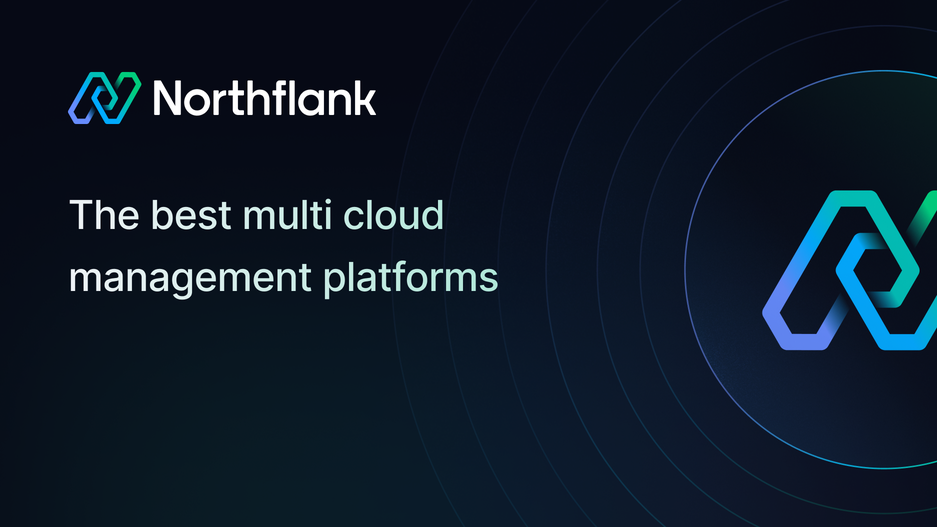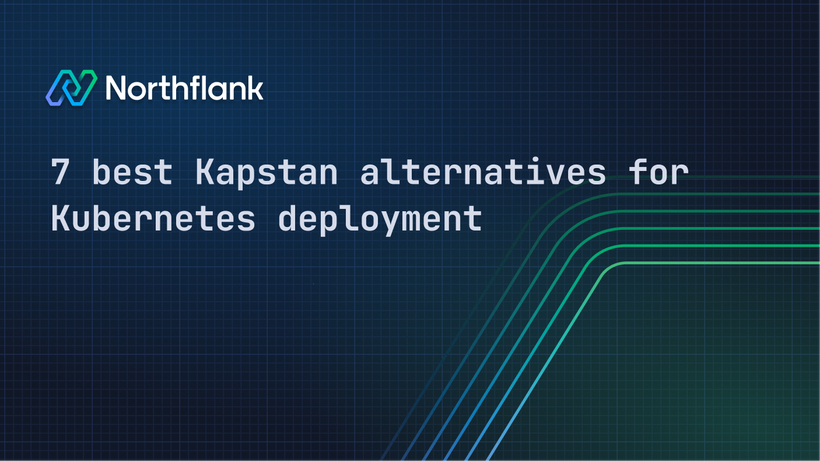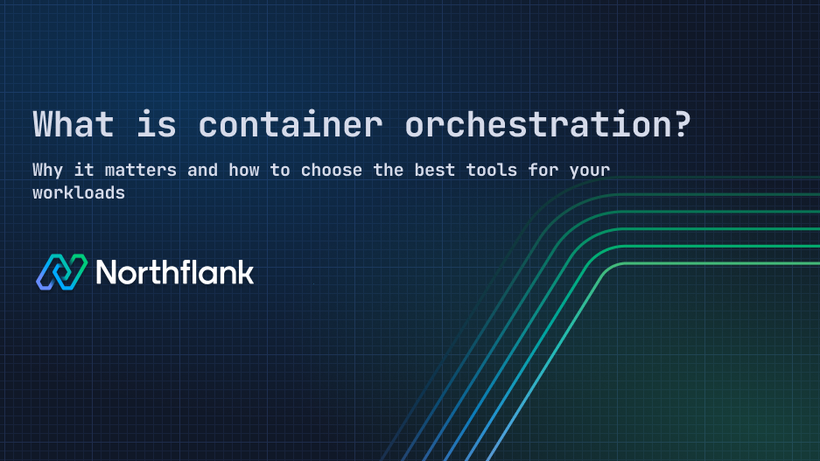

What are the best multi cloud management platforms in 2025?
Multi-cloud management platforms help companies deploy, monitor, and scale applications across multiple cloud providers from a single interface.
The top platforms in 2025 are Northflank, GKE Enterprise, Red Hat OpenShift, Spectro Cloud, and VMware Tanzu.
Northflank stands out as the best choice for development teams who want great developer experience when deploying applications across multiple clouds without dealing with complex Kubernetes configuration or vendor-specific deployment processes.
A multi-cloud management platform is a unified system that allows organizations to manage applications, infrastructure, and services across multiple cloud providers simultaneously.
These platforms provide centralized control over resources deployed on AWS, Google Cloud, Microsoft Azure, and other cloud services.
Instead of juggling separate dashboards and tools for each cloud provider, teams get a single pane of glass to deploy applications, monitor performance, manage costs, and ensure security compliance across their entire cloud infrastructure.
multi-cloud management platforms work by creating an abstraction layer above your cloud providers. The process typically follows these key mechanisms:
- Centralized control interface - The platform provides a unified dashboard where you can manage all your cloud resources, regardless of which provider hosts them.
- API Integration - The platform connects to each cloud provider's APIs, allowing it to provision resources, deploy applications, and retrieve monitoring data across different environments.
- Resource orchestration - You define your infrastructure and application requirements once, and the platform handles deployment across multiple clouds based on your specifications.
- Monitoring and analytics - The platform aggregates data from all your cloud environments, providing comprehensive visibility into performance, costs, and security across your entire infrastructure.
- Policy enforcement - You can set consistent security policies, compliance rules, and governance standards that apply across all cloud environments.
Several types of organizations benefit from multi-cloud management platforms:
- Enterprises need centralized management when using multiple cloud providers for different business units or to avoid vendor lock-in. These organizations require control and complexity reduction across their diverse cloud infrastructure.
- Growing startups often begin with one cloud provider but need flexibility to expand to others as requirements change or to leverage specific services. multi-cloud management enables this growth without operational burden.
- Development teams building cloud-native applications need streamlined deployment processes across different environments and providers without managing multiple toolchains.
- Regulated industries including finance, healthcare, and government sectors often require multi-cloud setups for compliance, data sovereignty, or disaster recovery requirements.
- Cost-conscious organizations want to optimize costs by leveraging competitive pricing across different cloud providers while avoiding single-vendor dependency that can lead to price increases.

Northflank leads the multi-cloud management space with its developer-first approach and comprehensive feature set designed for modern application deployment.
Key features:
✅ Git-native CI/CD with automatic deployments from code commits
✅ Advanced Kubernetes management with auto-scaling and health monitoring
✅ Built-in databases, caching, and storage services
✅ Comprehensive observability with logs, metrics, and alerts
✅ Infrastructure as Code support with Terraform integration
✅ Multi-region deployments across AWS, GCP, and Azure
✅ Developer-friendly interface with powerful CLI tools
Pros:
- Exceptional developer experience with intuitive workflows
- Powerful Kubernetes orchestration without complexity
- Integrated services eliminate need for separate database providers
- Competitive pricing with transparent, usage-based billing
- Strong security with SOC 2 compliance and encryption
- Excellent documentation and customer support
Cons:
- Newer platform with smaller ecosystem compared to hyperscaler tools
- Advanced enterprise features still expanding
Northflank uses transparent, usage-based pricing that scales with your actual resource consumption. The platform charges based on compute resources (CPU cores and RAM), storage, and data transfer, with no hidden fees or minimum commitments.
Compute pricing starts at $0.000012 per CPU core per second and $0.000003 per GB of RAM per second, making it cost-effective for both development and production workloads. Storage costs $0.10 per GB per month for persistent volumes, while database storage follows similar rates. Data transfer is priced at $0.09 per GB for outbound traffic.
The platform offers a free tier, perfect for testing and small projects. This pricing model makes Northflank particularly attractive for startups and growing companies who need enterprise-grade features without the enterprise price tag. It’s also fully self serve, which means you can get started without ever having to talk to sales.
Best for: Development teams building cloud-native applications, startups scaling across multiple clouds, and companies needing streamlined deployment workflows without operational complexity. Particularly suited for organizations with 5-500 developers who want enterprise capabilities at startup-friendly pricing.
Google's GKE Enterprise provides a comprehensive platform for managing Kubernetes applications across Google Cloud, on-premises, and other cloud environments.
Key Features:
- Multi-cluster Kubernetes management
- Service mesh integration with Istio
- Configuration sync with GitOps workflows
- Policy management and security scanning
- Hybrid and multi-cloud networking
Pros:
- Strong Kubernetes expertise from Google
- Good integration with Google Cloud services
- Advanced service mesh capabilities
Cons:
- Google Cloud-centric with limited true multi-cloud flexibility
- Complex setup and steep learning curve
- High cost with significant minimum commitments
- Requires substantial Kubernetes expertise
Pricing: Starts at $2.50 per vCPU per month for clusters, with additional costs for features and support. Minimum enterprise commitments typically range from $50,000-100,000 annually.
Best for: Large enterprises heavily invested in Google Cloud with complex Kubernetes requirements and dedicated platform engineering teams.

OpenShift is an enterprise Kubernetes platform that provides developer tools, security features, and multi-cloud deployment capabilities.
Key features:
- Enterprise Kubernetes distribution
- Integrated CI/CD pipelines
- Developer console and tools
- Built-in security and compliance
- Multi-cloud deployment options
- Operator ecosystem for application management
Pros:
- Mature enterprise platform with strong support
- Comprehensive developer tooling
- Active open source community
Cons:
- Expensive licensing and support costs
- Complex deployment and management
- Heavy resource requirements
- Steep learning curve for teams new to Kubernetes
Pricing: Licensing starts at $50 per core per year for basic subscriptions, with premium support reaching $300+ per core annually. Total costs often exceed $100,000 annually for production deployments.
Best For: Large enterprises with significant Kubernetes investments, regulated industries requiring extensive compliance features, and organizations with dedicated OpenShift expertise.
Spectro Cloud offers a Kubernetes management platform focused on enterprise-grade cluster lifecycle management across multiple clouds and edge environments.
Key features:
- Cluster lifecycle management
- Infrastructure as Code for Kubernetes
- Multi-cloud and edge deployment
- Policy-driven governance
- Cost optimization tools
- Security scanning and compliance
Pros:
- Strong focus on Kubernetes cluster management
- Good multi-cloud support
- Enterprise security features
- Flexible deployment options
Cons:
- Primarily infrastructure-focused, limited application-level features
- Smaller ecosystem compared to major cloud providers
- Requires Kubernetes expertise
- Higher complexity for simple use cases
Pricing: Usage-based pricing starting around $0.10 per cluster per hour, with enterprise features requiring custom pricing. Annual contracts typically range from $50,000-500,000 depending on scale.
Best for: Infrastructure teams managing multiple Kubernetes clusters across diverse environments, organizations with complex compliance requirements, and companies needing granular cluster lifecycle control.
VMware Tanzu provides a portfolio of products for modernizing applications and infrastructure with Kubernetes across multiple clouds.
Key features:
- Application platform with Kubernetes
- Developer productivity tools
- Service mesh and API management
- Multi-cloud Kubernetes operations
- Legacy application modernization
- Enterprise integration capabilities
Pros:
- Comprehensive application modernization platform
- Strong integration with VMware ecosystem
- Multi-cloud capabilities
Cons:
- Complex product portfolio with overlapping components
- High licensing and implementation costs
- VMware-centric approach limits flexibility
- Requires significant enterprise investment
Pricing: Complex licensing model with multiple product tiers. Basic Tanzu Application Service starts around $200 per application instance annually, while full Tanzu portfolios often require $500,000+ annual commitments.
Best for: Large enterprises with existing VMware infrastructure, organizations undergoing extensive application modernization, and companies needing comprehensive platform engineering solutions.
multi-cloud management platforms have become necessary for companies that want flexibility across different cloud providers without getting stuck with one vendor.
While there are several solid options in 2025, Northflank stands out because it actually makes multi-cloud deployment easier for developers rather than adding more complexity.
Most platforms in this space either lock you into their parent cloud provider or require dedicated DevOps teams to manage the complexity.
Northflank takes a different approach by handling the hard parts automatically while giving developers the control they need when they need it.
If you're building applications and want to deploy them across multiple clouds without spending months learning Kubernetes or dealing with vendor-specific quirks, Northflank is your best bet.
It's the only platform that delivers enterprise-grade multi-cloud capabilities while keeping things simple enough for actual development teams to use effectively.
Q: What's the difference between multi-cloud and hybrid cloud? A: Multi-cloud uses multiple public cloud providers (AWS, Google Cloud, Azure) while hybrid cloud combines public cloud with on-premises infrastructure. Multi-cloud focuses on avoiding vendor lock-in and optimizing services across providers.
Q: Do I need a multi-cloud management platform if I only use one cloud provider? A: Not necessarily, but these platforms can still provide value through simplified deployment workflows, better developer experience, and preparation for future multi-cloud adoption as your organization grows.
Q: How much does multi-cloud management typically cost?
Multi-cloud management costs vary significantly based on platform choice and scale. Northflank's usage-based pricing typically runs $50-200 monthly for small development teams, $200-1,000 for production workloads at growing companies, and $1,000+ for large enterprise deployments. This compares favorably to enterprise platforms like GKE Enterprise that require $50,000-100,000 annual commitments or Red Hat OpenShift with licensing costs often exceeding $100,000 annually. The key is choosing a platform with transparent pricing that scales with your actual resource consumption rather than arbitrary licensing tiers.
Q: Can multi-cloud management platforms help reduce cloud costs? A: Yes, by enabling you to choose the most cost-effective cloud provider for specific workloads, optimize resource allocation across providers, and avoid vendor lock-in that can lead to price increases.
Q: What happens to my data if I switch multi-cloud management platforms? A: Your data remains in your chosen cloud providers. Multi-cloud management platforms orchestrate and manage resources but don't typically store your application data, making switching platforms more straightforward than changing cloud providers.
Q: How long does it take to set up a multi-cloud management platform? A: Setup time varies by platform complexity. Northflank can be configured in hours, while enterprise platforms like Azure Arc or Google Anthos may take weeks or months for full implementation.
Q: Do multi-cloud management platforms support all cloud services? A: Coverage varies by platform. Most support core services like compute, storage, and networking across major providers. Northflank focuses on application deployment and management services, while others may emphasize infrastructure provisioning or governance.


